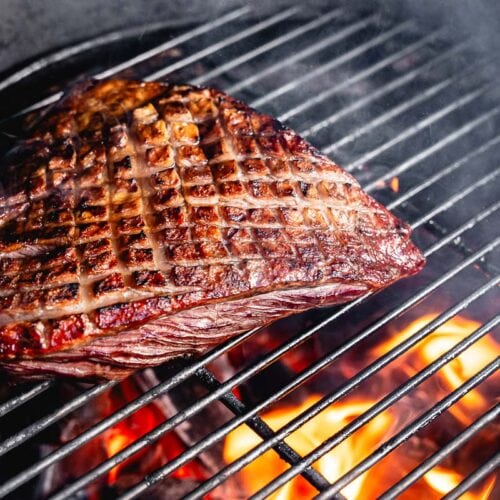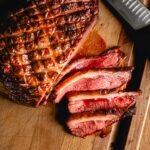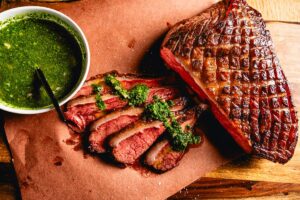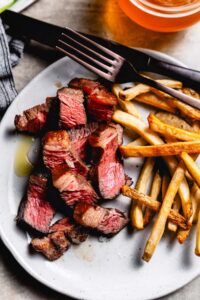Picanha is a steak cut that raises a lot of questions and isn’t always easy to find. You might have heard of it at a Brazilian steakhouse or from a fellow meat enthusiast, but perhaps aren’t quite sure what it is. I love sharing this wonderful cut because once you find it and give it a try, it just might become your new favorite (it certainly is one of mine). As someone who’s cooked hundreds of steaks, I can tell you that picanha offers something special that’s worth seeking out.
What is Picanha?
Picanha (pronounced pee-KAHN-yah) comes from the rump cap or top sirloin of the cow. This cut features a characteristic thick fat cap that renders slightly as it cooks, adding to the flavorful experience of the steak. The meat itself is well-marbled with minimal connective tissue, resulting in a tender, juicy steak with a very robust beef flavor.
It’s a cut that is native to Brazil, picanha has become a beloved staple in Brazilian cuisine and Brazilian steakhouse restaurants, where it is grilled over an open flame or roasted on a spit. This method of preparation allows the fat in the well-marbled picanha to slowly render, basting the meat and keeping it tender and juicy.
Alternative Names
- Culotte
- Rump cap
- Coulotte steak
- Sirloin cap
- Top sirloin cap
The different names mainly refer to the specific location of the picanha cut on the cow. It comes from the top portion of the sirloin closest to the rump. But “picanha” is the Brazilian Portuguese name that is most widely used and recognized when referring to this cut of meat.
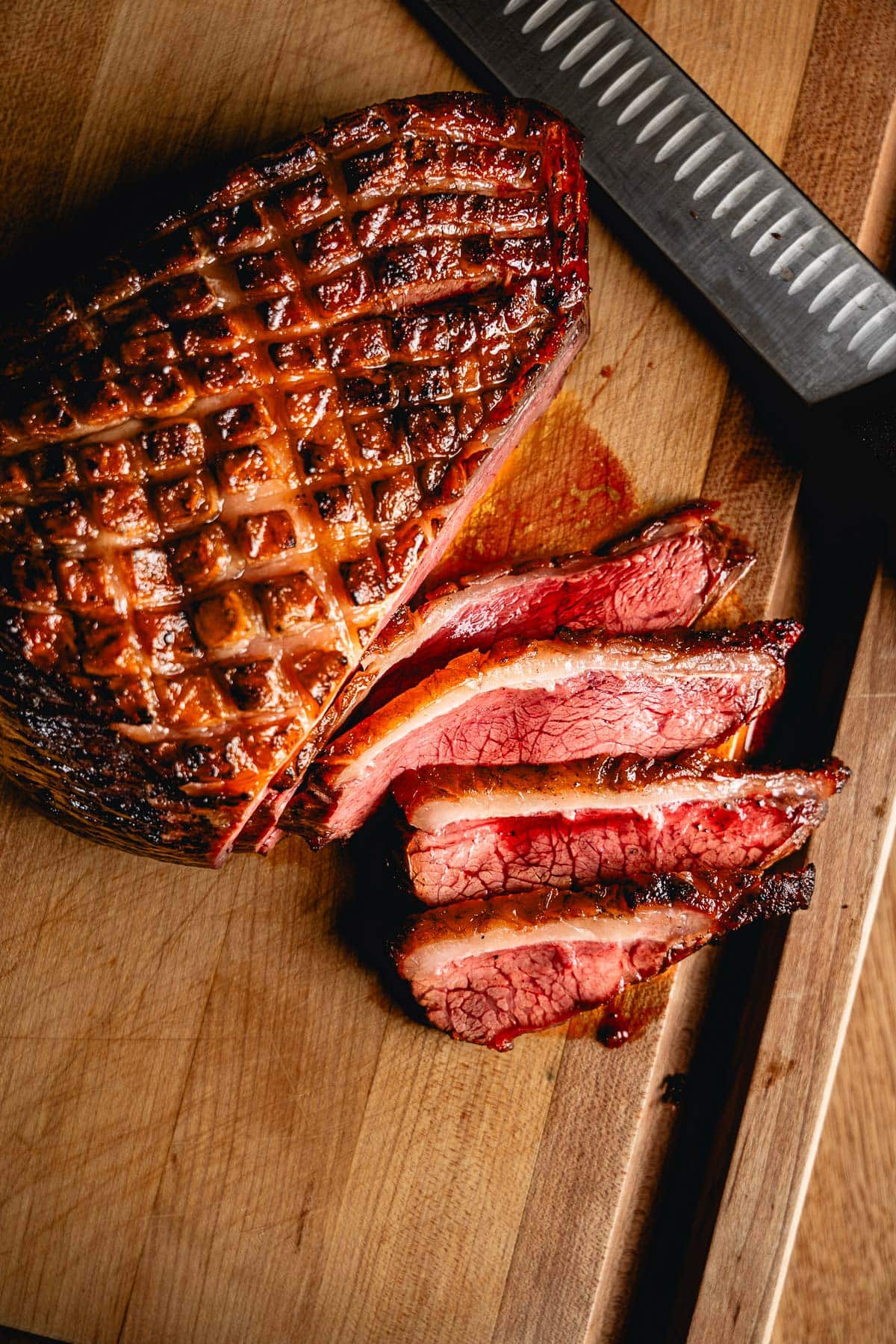
Where to Buy Picanha
Local Sources
- Specialty butcher shops
- Latin or Brazilian markets
- Some Costco locations (call ahead to confirm)
- Costco Business Centers often stock consistently
Online Options
Buying Tip: Look for a thick fat layer on top – this is essential for authentic picanha.
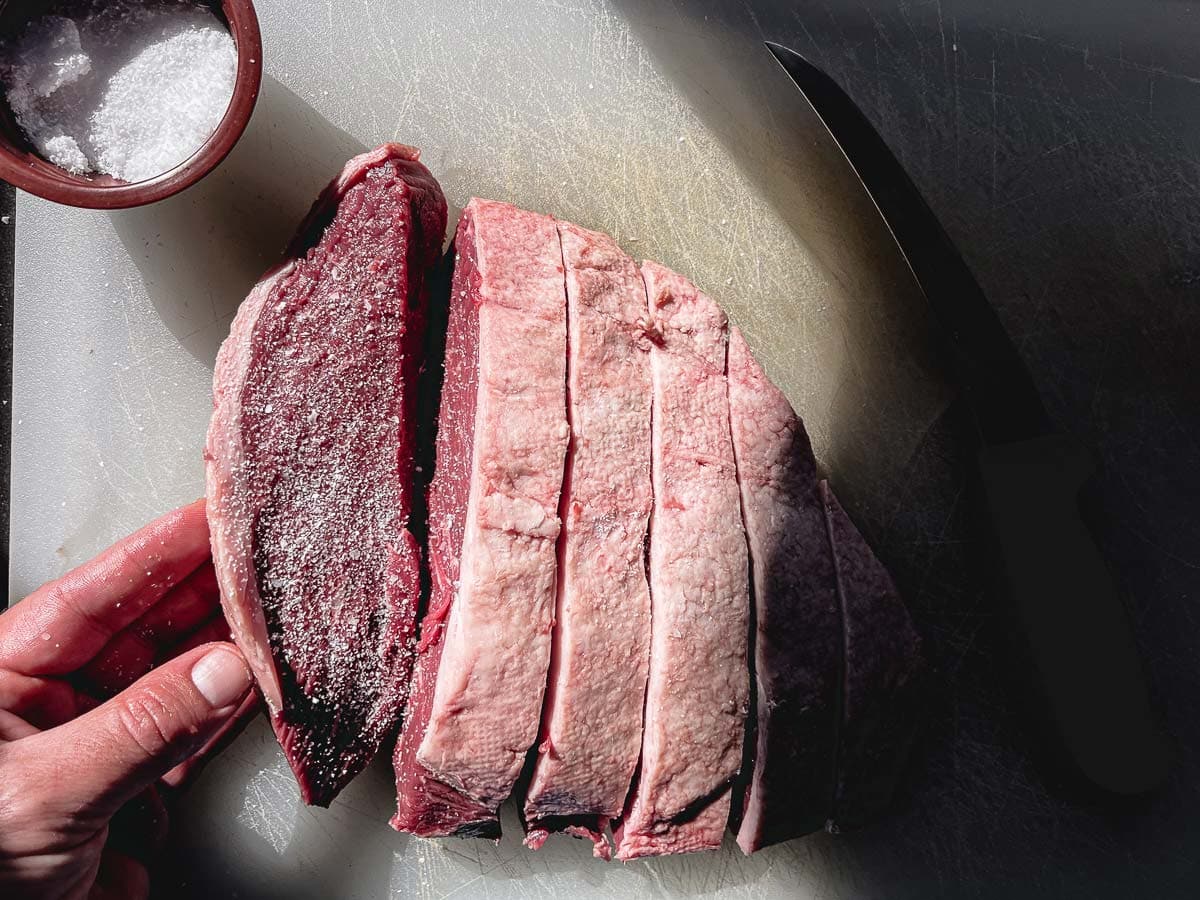
Preparation Methods
There are two common methods for preparing picanha for grilling, roasting and pan-searing.
Whole Roast
Advantages:
- Easier to handle on the grill
- Ideal for low and slow cooking in the smoker
- Perfect for serving as a shareable roast, sliced to serve
Individual Steaks
Advantages:
- Quicker, even cooking
- More surface area for browning
- Flexible portion sizes
- Ideal for churrasco-style cooking (on skewers) and pan searing
Both methods work great. Cutting picanha into individual steaks is more common for quick, high-heat grilling or pan searing. Leaving it whole requires less prep work and lets you cook it slowly smoked or roasted. There’s really no right or wrong way to do it.
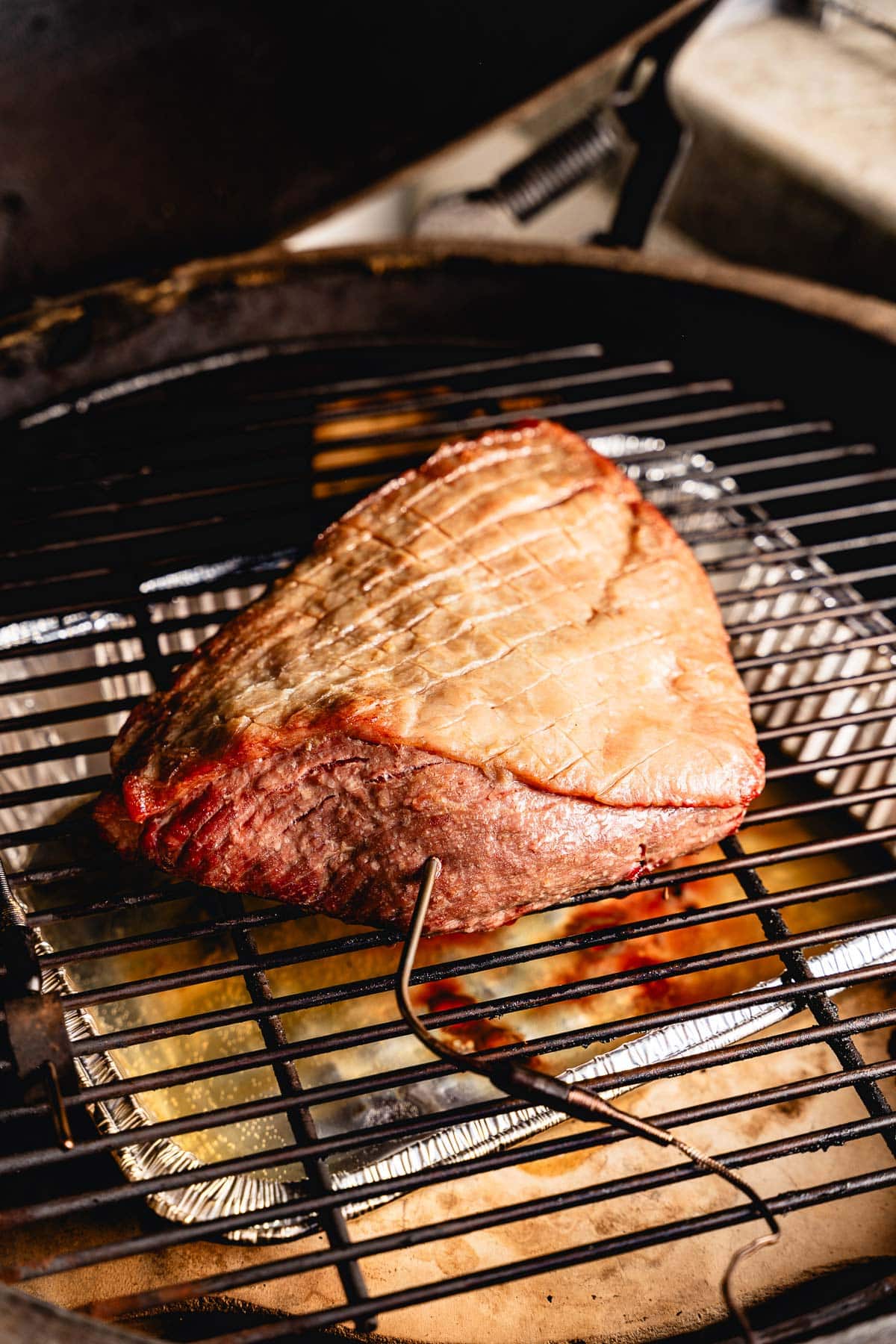
How to Cook Picanha
- Reverse sear in a smoker – First cook at a low temperature, then sear over high heat grill
- Sous vide – Precisely cooked in a water bath, then seared over high heat to crisp the fat.
- Direct grilling – Individual steaks are cooked over direct flame of the grill.
- Pan searing – A heavy-bottom skillet to sear the steaks, rendering the fat.
- Oven roasting followed by stovetop sear
Recommended Doneness: Medium-rare (130° to 135°F internal temperature)
Seasoning: Simple is best – kosher salt and black pepper are sufficient to highlight the natural flavor.
Whichever cooking method you choose, this cut is going to be delicious when seasoned simply with kosher salt, pepper, and cooked medium-rare. Learn more about steak temperatures.

